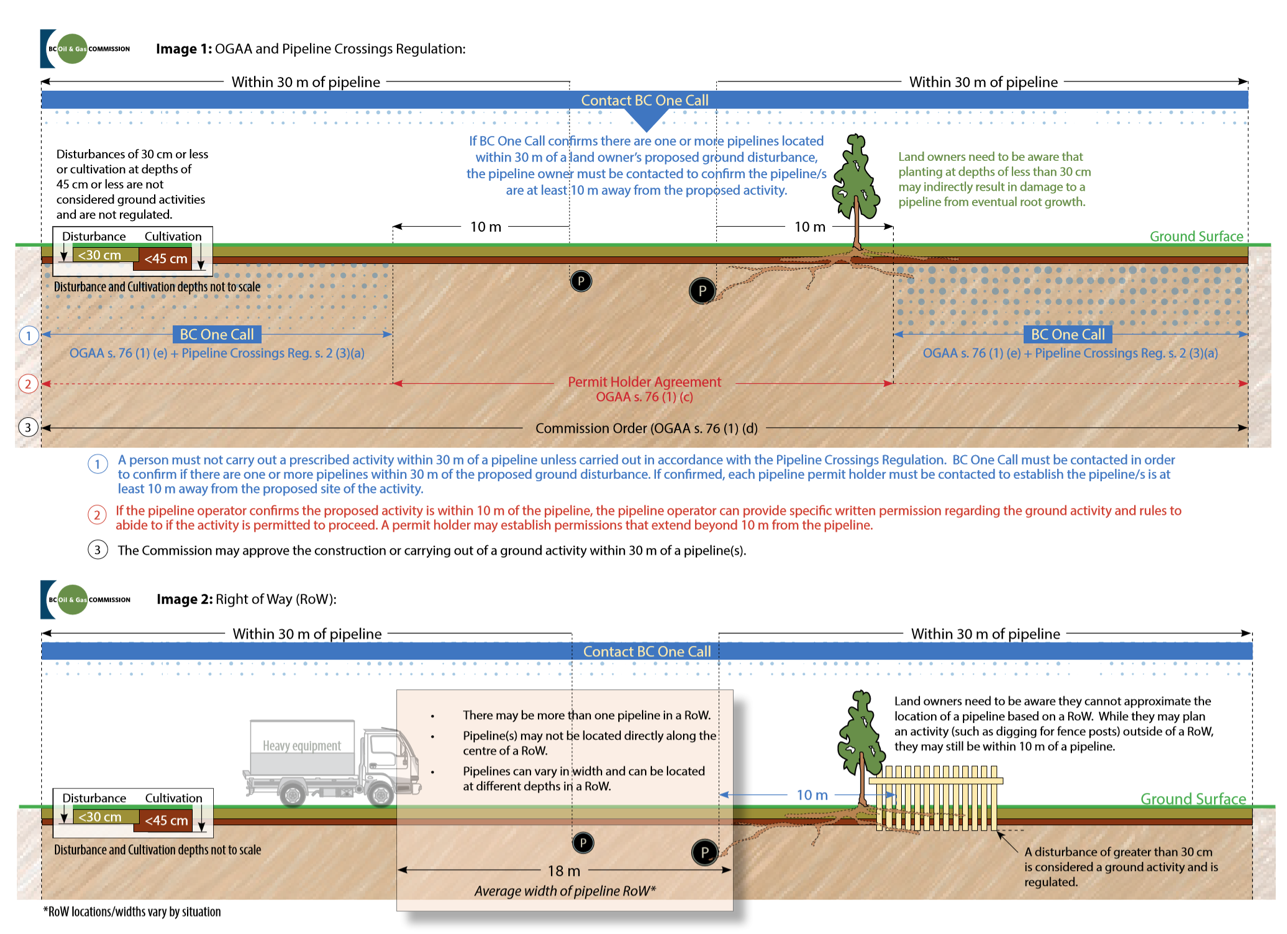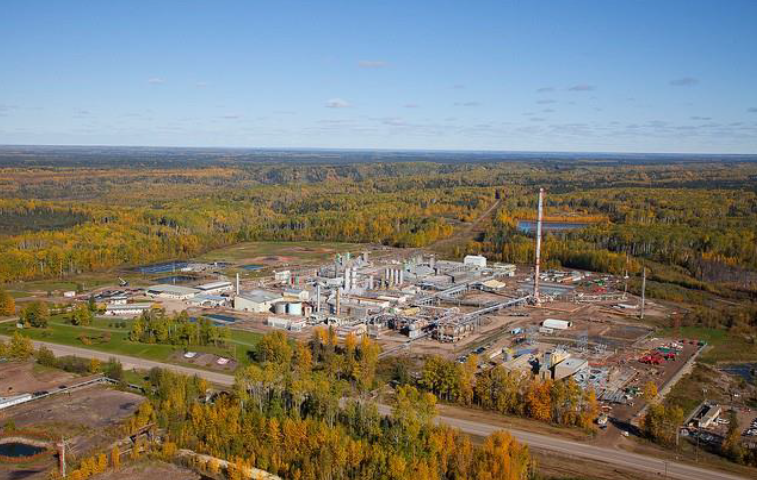Right of Way agreements enable the landowner to use and enjoy the property and ensure the safe operation and maintenance of the pipeline. These agreements as well as regulations from the regulator can place certain limits on how the land in a right of way can be used. These limitations are imposed to ensure the integrity of the pipeline – for your safety and the safety of others. Many activities such as farming and gardening go on as normal within the Right of Way.
Information for Landowners
Activities On or Near the Right of Way
Uses of the right of way that are generally acceptable include:
- gardening, lawns, low shrubs
- most farming activities
- livestock
- trails for hiking and horse riding
Uses of the right of way that are not permitted include:
- structures and foundations (for example: garden sheds, patios, swimming pools, playhouses, satellite dishes, etc.)
- trees
- wells or pits
- blasting
- pile driving or augering
- crossing with heavy equipment
Excavation within 30 metres of the Pipeline requiring permission:
- excavation using power operated equipment
- use of explosives
For more information, contact lands@nrm.ca or 1-866-262-3654.
Crossings Application Form
Vehicle Crossing Information Form
Crossings Application Form
Pipeline Activity – BC Oil and Gas Commission
Pipeline Crossing Distances
The permit holder must not carry out a prescribed activity within 30 m of a pipeline unless carried out in accordance with the Pipeline Crossings Regulation. BC One Call must be contacted in order to confirm if there are one or more pipelines within 30 m of the proposed ground disturbance. If confirmed, each pipeline permit holder must be contacted to establish the pipeline/s is at least 10 m away from the proposed site of the activity.
If the pipeline operator confirms the proposed activity is within 10 m of the pipeline, the pipeline operator can provide specific written permission regarding the ground activity and rules to abide to if the activity is permitted to proceed. The pipeline operator may establish permissions that extend beyond 10 m from the pipeline.
Regulations: BC Oil & Gas Commission, Oil and Gas Activities Act (OGAA), Pipeline Crossing Regulation, Chapter 11.2.1 Pipeline Crossing Distances, www.bclaws.ca/civix/document/id/complete/statreg/147_2012
More information is available in Land Owner’s Information Guide on the Commission’s website.
OGAA and Pipeline Crossing Regulation
Images Courtesy of: BC Oil & Gas Commission, Land Owner’s Information Guide, pages 34-35 at https://www.bcogc.ca/node/11033/download
Integrated Pest Management Plan (IPMP)
As a responsible operator, NorthRiver maintains or controls vegetation within its facilities as well as on its pipeline rights-of-way for operational, regulatory and safety reasons.
The 2025-2030 Integrated Pest Management Plan (IPMP) is an integral component of NorthRiver Midstream’s (NorthRiver) long-term commitment for a successful Integrated Vegetation Management (IVM) Program. The integrated vegetation management (IVM) program has been in operation for several years, and this is a continuation of current vegetation control practices. Integrated Pest Management (IPM) is a long-standing, science-based, decision-making process that identifies risks from pests and pest management related strategies. It coordinates the use of pest biology, current environmental information, and newly innovative and available technology to prevent unacceptable levels of pest damage by the most economical means, while maintaining the least possible risk to people, property, resources, and the environment.
NorthRiver’s integrated pest management program for the control of undesirable vegetation and invasive weeds, has been developed as per Section 58 of the British Columbia Integrated Pest Management Regulation.



